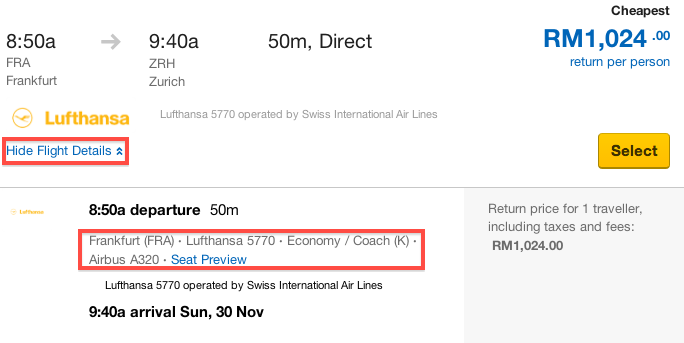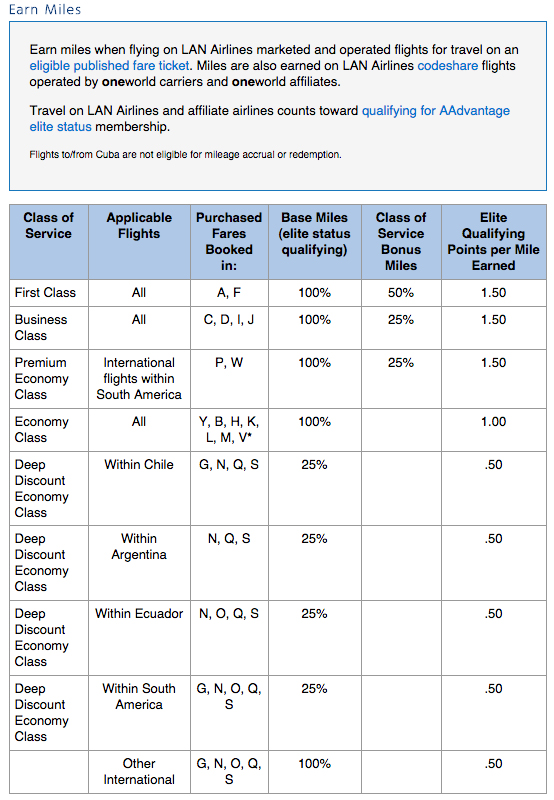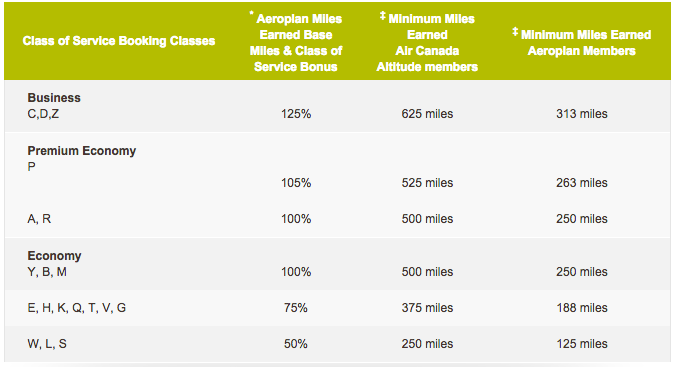 Now I’m not one to go around recommending people actually pay for tickets, but when it happens, you need to know how to get the most miles no matter what airline you’re flying on. We’ve got another international mistake fare coming up, or perhaps you’re someone who has to fly for work… Whenever you pay for a flight there are multiple airlines you can credit the miles to.
Now I’m not one to go around recommending people actually pay for tickets, but when it happens, you need to know how to get the most miles no matter what airline you’re flying on. We’ve got another international mistake fare coming up, or perhaps you’re someone who has to fly for work… Whenever you pay for a flight there are multiple airlines you can credit the miles to.
The question is which is the best airline to credit miles to. Because now American Airlines, for example, doesn’t credit miles flown on all of their partners equally. It’s crazy because Cathay Pacific earns 0% miles, while most OneWorld partners would earn 100% AA miles. The difference here, is obviously huge.
To figure any of this stuff out however, you need to know what your fare basis code is.
What is a fare basis code, practically?
A fare basis code is the code assigned to your ticket which will distinguish a few things about it. (Basically it will tell the computer what is and isn’t allowed for this ticket.)
For example if you buy a first class ticket, it probably has the fare class code “F”. This “F” code loads your ticket with the F class allowances and stipulations. This is the code that will tell the computer how many bags you can check for free, what your cancellation fees will be, if any, etc.
Divisions of economy
Just like a hotel may have more room-types than you realize with “standard” or “garden view standard” or whatever, these tickets may have more fare types than you realize too.
For the most part, these “extra divisions” apply to economy classes. Business and First are usually just divided like that. A code for first (A or F), and a code for Business, (typically J or C, depending on the airline).
Economy is the one that’s less straight forward. For instance while you think you are choosing between economy, business, and first, you may actually be deciding between discount economy, regular economy, premium economy, business, and first. Lots of types of economy when you thought there was 1.
And each of these types will have its own code that indicates its specific allowances, rules, etc. For instance maybe the discount economy code will establish that you will earn a fraction of the miles for this flight.
In fact, when you do a Kayak search and filter your search for the cheapest results, the cheapest results are going to be some kind of discount economy. And thus, in one way or another, you won’t have the same allowances you would for regular economy.
How to find a flight’s class code?
Often times the fare class code is visible on your flight information when you’re purchasing your ticket. For instance the screenshot below shows where you might find it for a United flight. This is simply the ticket that showed up using United.com’s search engine.
Notice that the United Economy class code is “E” while the AeroGal Economy class code is “L”.
This class fare code isn’t always as clearly listed as that though. For example, if you are buying a flight on Expedia, you’ll have to click “Show flight details”.
When using Hipmunk to book a flight, you won’t really have an option to see further flight details until it redirects you to the site actually providing your ticket. Then, that website will likely have an option to show complete or advanced flight details.
And you can always use ITAMatrix to help you out. (Read more about how to use ITA Matrix here).
With ITA Matrix, you can find your specific flight and by clicking on the “Details” button all the way to the right, you can see extended details, including the fare class code.
Retroactively finding the fare class for a flight already booked
If you book a ticket online, many times your e-receipt will have the fare class code listed on your flight information, just like we saw in the examples above. Pretty straight-forward if you know to look for an “expand details” or “flight details” type button, or sometimes it’s just listed in parentheses next to the fare. Ex: Economy (R) or whatever.
But sometimes if you use some resources like Orbitz or Priceline or something, it can be harder to find. (Hat tip to this blog for putting the information online!)
Basically for these types of tickets you are going to want to search for the words “fare rules” or “fare rules and restrictions.” If you can find these words in the “information” or “changing your ticket” sections of your confirmation/receipt, it will provide a link for more information. This page will show you your fare class code, which you can compare with that airline’s online information to learn about earning, etc.
You can also use this tool: Check My Trip.com. But it will not work for every flight, and sometimes it will give you your fare class title, but not the code. And it’s the code that you really want.
Finding out how much your fare class code earns
As mentioned before, one of the important factors determined by a fare class code is how many miles you’ll earn with a flight of that class. Many of the discount economy flights for instance do not earn full mileage credit for paid flights.
So every time you buy a flight, here is the process you should go through.
1.) Find out who the major partners with great award charts are.
- Star Alliance: United, Aeroplan, Aegean* (if you’re going for elite status), Lufthansa, Avianca
- OneWorld: American Airlines, British Airways
- StyTeam: Delta, Air France
2.) Are you going for status? Because if so, that’s who you should be crediting your miles to.
3.) If not, which one of the big partners do you want to earn “redeemable” miles for?
4.) Google “earn [desired miles] on [airline you’re flying].”
The reason we do this airline-specific google search is because the relationships from airline to airline are different, even if they’re all part of the same alliance. At least when it comes to mileage earning. So we don’t just want a mileage program’s class code earning chart. We want their class code earning chart for the specific partner airline we’re flying.
So let’s do a few examples.
Example 1: “Earn AA miles on LAN” .
This is where the google search took me.
So let’s say we were flying LAN, MIA-LIM-MIA.
According to ITA Matrix this flight is in N class. According to the chart above, this N class flight will earn 100% since it’s an international flight.
According to gcmap.com, this would be 5,217 miles flown. Earning at 100% means we’re earning 5,217 miles.
Example 2: “Earn United miles on LOT”
That google search led me to the following chart:
So for an example flight from ORD-WAW-ORD, ITA Matrix showed the following flight with a “W” class.
According to the chart above, “W” class only earns 25% United miles. That’s only 2,342.5 earned miles for 9,370 flown. So let’s see if we’d be better off earning miles for someone else’s mileage program.
Now, googling “Earn Aeroplan miles on Lot” lead to the following chart:
While a lot of other things I tried still showed 25% earnings in W class, Aeroplan has a better result. Now we’re earning 4,685 miles for 9,370 flown miles. A little better.
One note with United: if you are flying a United flight (any flight beginning in 016) and want to earn United miles, your fare class code is not really going to matter much as they are instilling a new, revenue based earning for United flights.
That revenue calculator can be found here.
But if you are flying on a United partner, any flight number that does not begin with 016, you’ll still earn by mile flown in accordance with your fare class code. So you’ll do the same google search in the example above.
Conclusion
So now we should have a basic understanding of what a fare class code is and why it matters. You should now be able to do the following things, every time you buy a ticket on cash.
1. Find your fare class code either at the time of booking by showing advanced details, or after booking by looking at your receipt.
2. Find out what airline you want to credit your miles to by seeing which major airlines are in the same alliance.
3. Find what percent of miles you’d earn by doing an airline-specific search: “earn [X miles] on [X airline].” Then, by using that chart to see at what percent your class code will earn miles.
4. Calculate how many miles are flown with gcmap.com.
This will help you make sure you’re getting value out of every flight you pay for. And the kind of value you want and can use later, not just a bunch of random miles spread out across teeney little airline mileage program.














One clarification that can be very important when dealing with codeshares: For OneWorld and StyTeam (oink!) it’s generally the fare class on the marketing carrier that determines the earnings. For Star Alliance, it’s generally the fare class on the operating carrier (which may be more difficult to determine, though Wandering Aramean has a useful tool).
This is a really good point, and I hope I was clear about miles being determined by the operating airline, maybe I should go back and do so. I didn’t even know there was a tool. Got a link?
This doesn’t cover every situation, but it’s a good start:
http://wandr.me/Tools/staralliance_codeshare_mapping.aspx
I kept buying deeply discounted CX tickets thinking I could earn Alaska or American miles, only to realized those tickets were not eligible. Some of those tickets could earn 50% Asia Miles. The kicker is, I’m still too dumb to set up an Asia Miles account, so all those paid tickets for nothing!!!
This post is a great wake up call to get my stuff together.
Thx. Surely there’s something you can credit to besides CX for 50%?
Wow. This is extremely informative article. Thanks a lot. There are still many nuances of the trade but this is a great start and will be very useful to take some decisions.
Thanks Kumar.
I think for United you mean a ticket number starting in 016, not a flight number. That leads to my next question. How can you determine if your ticket number is going to start with 016 before the ticket is issued? I was under the impression that tickets purchased through United, even if the flights are operated by codeshare partners, will be United “016” tickets and thus not eligible to earn the actual mileage flown, but that tickets purchased through (and flown on) United partners, and credited to Mileage Plus, will earn the actual mileage. Is that correct or am I misunderstanding the new rules?
What they mean, I believe, is that it’s a ticket where the operating flight is United. If you book a United ticket and the flight is operated by United, then it’s revenue based. But flights by partners are not on the same system.
Finally! Been waiting for someone to explain these Fare codes. Definitely subscribe. Thanks again and kudos to Drew.
Great. 😀 Thanks and I’m glad it was helpful/timely.
Drew,
great post as always. Is it even possible to credit miles to 2 different airlines? For example if I flew BA, how do you credit that to both BA and AA? Do you just do that online?
Love your blog
Ya know I’ve never done that. But I have given my rewards number at checkin. So my assumption is yet. You could ask them to add your one rewards number before checking into your United flight and give another rewards number for your return on Swiss or something.
Very nice article! You should write about all those ‘not friendly’ airlines that provide 0 or 100 miles for 1000 USD flights, such as Lufthansa or SWISS
I have a question, LH has branded fares named Light, Classic and Flex.
But the name of a fare, aside from CLS, LGT, FLX also has other information in it.
For example: K37LGT5A – we can see that this is a light fare, K booking class, but what does 37 and 5A mean?
In addition, I think branded fares are for European destinations. For US for example the fare KLNCZDEW, does not represent LGT, CLS, FLX.
So my question is, how does LH name its fares? What’s the logic behind the names?
I yearly fly with Philippine Airlines. How do I find out their coding SKNOVR and Fare Basis ELWFUS stands for? Thanks.